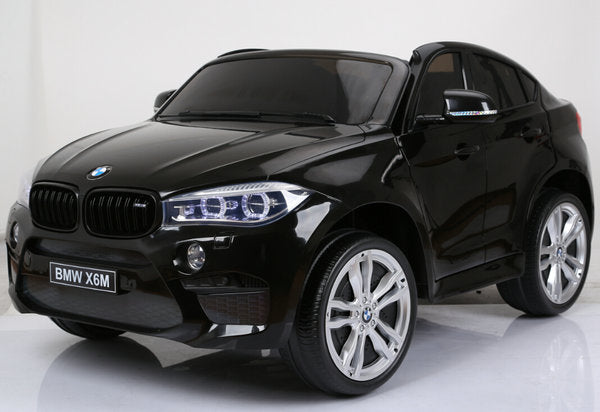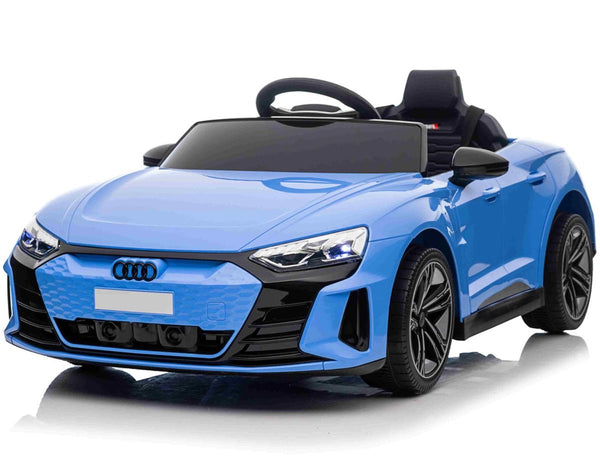Understanding the charging times and battery life of children who ride electric on their cars will allow you to ensure uninterrupted playtime. Here's what you need to be aware of: Battery Type
Most electric ride-on vehicles are rechargeable and utilize led-acid or lithium-ion batteries. Lithium-ion batteries generally offer longer battery life as well as faster charging times compared to lead-acid batteries.
Battery Capacity
The battery capacity, measured in ampere-hours (Ah) or Watt-hours (Wh) is the measure of the length of time that a ride-on vehicle can run on one charge. Batteries with higher capacity provide longer playtime between recharges.
Run Time -
The time it takes to run an electric ride-on vehicle refers to the amount of time it is able to operate continuously on a single charge. The running time of an electric ride-on vehicle is dependent on variables like battery capacity and motor power. It also depends on the terrain and the amount of weight the driver.
For electric ride on cars typically, the run time is 30 minutes up to 2 hours from the use of a single battery. Batteries with a large capacity can offer a longer run time.
Charge Time
The time for charging is the time taken to recharge the battery fully after depletion. Charging times can vary depending on the battery capacity, charger specifications and charging method.
The average charging time of electric ride-on vehicles is between 8 and 12 hours. Certain models can charge faster speeds, especially with lithium ion batteries.
To ensure the safety of your family and prolong battery life, it's important to recharge the battery in accordance with the instructions of the manufacturer. Battery performance and durability may be affected by charging too much or undercharging.
Charge Methods Charge Methods
Electric ride-on vehicles are usually equipped with a charger which can be connected to an ordinary household outlet. Certain models come with fast-charging features, or include a charger that adjusts the rate of charging depending on the battery's condition.
To prevent damage to the battery or the electrical system ensure that the charger as well as the port on the ride-on are compatible.
Additional Batteries
Some electric rides offer the option to buy additional batteries or spare batteries to extend play time. If you have extra batteries, you can swap out the battery that is depleted for an fully charged battery to minimize downtime.
If you know the battery duration and charging time of an electric ride-on kids' car You can be sure that your children will have fun and uninterrupted playtime as they explore their surroundings. The battery's performance and longevity can be improved by regularly charging the batteries and following correct charging procedures. Follow the recommended Lamborghini kids car for site advice including car on ride, toy with car, childrens electric ride on, ride a toy, electric ride on cars, digger ride, a toy car, pedal car, lambo toy car, remote control childrens electric cars and more. .

What Is The Difference Between Outdoor And Indoor Model Cars For Children?
Cars for kids are designed with particular features and characteristics to suit different environments and usage scenarios, whether indoors or outside. These models are designed differently - Indoor Use Cars
Size and Weight- Cars designed for indoor use will have a smaller dimensions and weigh less which makes them more able to maneuver within narrow areas. This includes living rooms and playrooms. They can maneuver through tight spaces and narrow passageways with ease.
Low Ground Coverage - Cars used for indoor use have an extremely low ground coverage to prevent them from becoming stuck or trapped against obstacles such as carpets and thresholds. This allows smooth, unhindered movement across indoor surfaces.
Smooth Wheels. Indoor cars often feature wheels made of substances that have a smooth surface, like rubber or plastic. These wheels provide better grip and traction on smooth surfaces, like laminate flooring, hardwood floors or tile. They are designed to minimize sound and prevent scratching of indoor surfaces.
Temporary Speed - Indoor vehicles are typically restricted to a slower speed to keep control and safety. This can help to prevent collisions and accidents with furniture, walls and other objects in indoor spaces.
Outdoor Use Cars -
Built to Last - Vehicles made for outdoor use are built with tough materials like tough plastic or metal to endure rough handling and outdoor elements like sunlight, humidity, and temperature fluctuations. They are designed to withstand the harsh environment of outdoor use.
The higher the clearance of the ground is, the better equipped to handle bumps and uneven terrain. This lets the vehicle traverse rough terrain without causing damage or getting stuck.
Traction Tires-The tires of cars specifically designed for outdoor use usually include treads to give better traction or grip on slippery or uneven surfaces. This ensures stability and control while driving outside, preventing sliding or skidding.
Weather Resistant - Outdoor use cars may feature weather-resistant components such as sealed electronics, waterproof casings or rust-resistant materials that protect against environmental damages and moisture. They are able to stand up to the elements of rain, mud, or puddles, while retaining their performance.
Outdoor-use vehicles have a higher speed limits to allow for huge areas and distances. Children can enjoy a more thrilling and adventurous journey when they are exploring the outdoors.
Parents can choose a vehicle for their kids that is suitable to their needs, whether indoors or out, by considering the design and features. This will provide an enjoyable, safe and lasting play experience. View the recommended discover more for kids cars for more examples including toy a car, digger ride, childrens digger, a toy car, toy car, digger ride, kidscars, ride ons, toy car, digger ride and more. .

What Are The Alternatives For Remote-Controlled Cars For Children? What Are The Advantages And Disadvantages Of These Cars?
The diverse sizes, designs of prices, sizes, and styles of children's cars with remote controls can be found to suit the needs and budgets of everyone. Below is a list of various types of remote control kids' cars, including their sizes, price ranges as well as pros and cons.
Electric RC Cars – These are battery-powered, remote-controlled vehicles that can be operated outdoors and indoors. There are numerous designs of RC vehicles like buggies, trucks and sportscars.
Nitro RC Cars – Gas powered remote controlled cars which provide better performance, but require more care. They're typically bigger and cost more than electric RC vehicles.
Scale models can be described as replicas of real-life vehicles, such as cars and trucks. They can also be controlled remotely. Scale models range between 1-10 and 1-24, with larger scales allowing for more details.
Sizes -
Remotely controlled children's cars come in various dimensions. These range from small micro-sized copies to large-scale copies. The size of the car can affect the performance, speed, and handling characteristics.
Micro-sized cars are small and light. This makes them perfect for indoor use, especially with young children. Models with larger scales are more powerful, durable and therefore are ideal for off-road or outdoor racing.
Prices
Prices differ based on the size, features brand and the build quality.
The price of micro-sized electric RC vehicles range between $20 and $100. However larger-scale electric or nitro RC models can range between $100-$500.
Scale models and top-quality hobby grade RC cars range from several hundred dollars up to 1000 dollars, based on the degree of detail and speed.
Pros and Cons
Pros -
Children and adults can enjoy the thrills and excitement of remote-controlled vehicles.
Skill Development. Driving a RC car helps children develop hand-eye coordination spatial awareness, problem-solving and spatial abilities.
Social Interaction RC cars are a great way to play with friends and families, encouraging social interaction and cooperation.
Customization - A lot of RC automobile models are modified using aftermarket components, upgrades and accessories to boost performance and aesthetics.
Cons
Cost - High-quality remote control children's cars can be expensive, especially hobby-grade models with sophisticated features.
It can be difficult for children to operate the RC cars for the first time.
Maintenance is necessary for RC car owners. They should regularly clean or lubricate their vehicles, as well as make repairs or replace parts.
Safety Concerns - RC vehicles are prone to danger in the event that they aren't operated properly under the supervision of an adult. They could create accidents, fall hazards and electrical dangers.
In general, remote-controlled kids' vehicles provide a thrilling and educational experience for all kids. But, when selecting the right model for your child consider things like the price size, dimensions, features and safety. Hobby-grade RCs may be suitable for older kids and enthusiasts while simpler models will suit younger children and beginners. Have a look at the top JCB ride on toys kidscars.co.uk info for more info including electric two seater cars, toy cars, car toy toy, electric two seater cars, car electric ride on, toy a car, a toy car, remote control childrens electric cars, cars pedal car, childs ride on car and more. .
